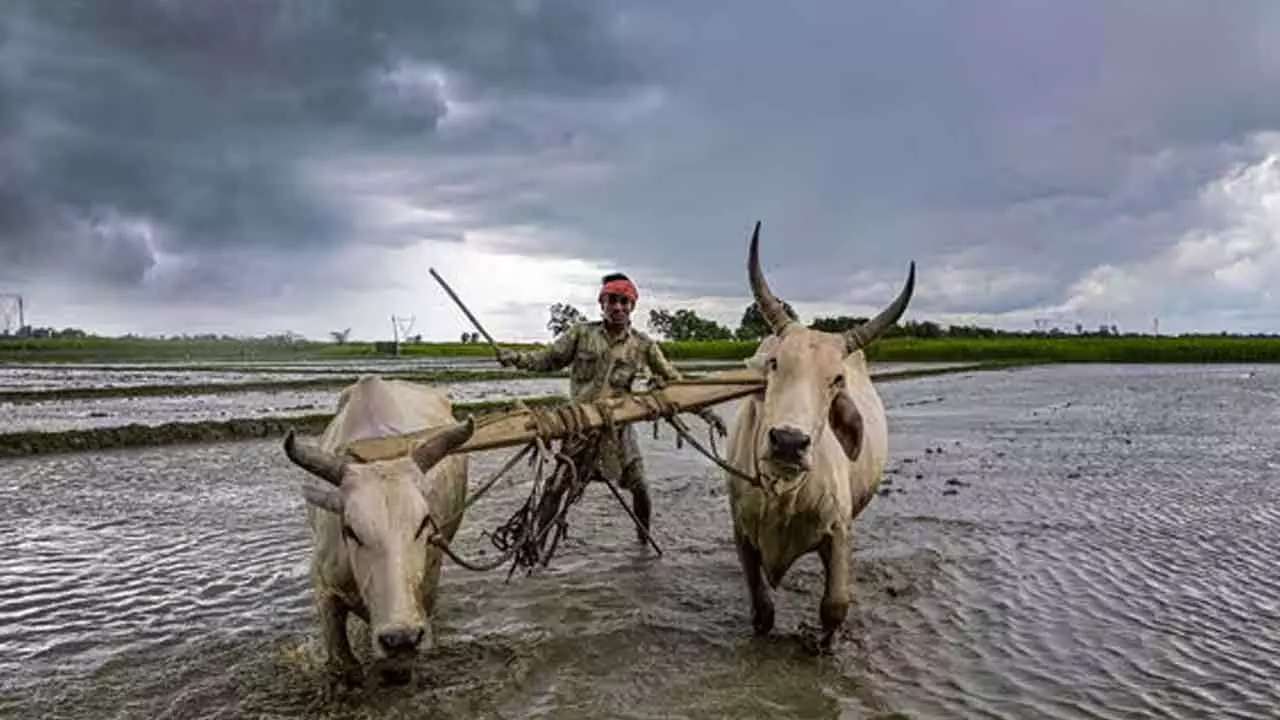Good monsoon a precursor to demand revival

Cheering farmers and industry alike, this year the south-west monsoon (June to September) has brought 8 per cent more rainfall than usual due to intense low-pressure systems in August and September. Breaking the news on Tuesday, the India Meteorological Department announced that the southwest monsoon completely withdrew from the country, and the northeast monsoon simultaneously made its entry over southeast peninsular India. A good rainfall is not only a boon to the agriculture sector, which accounts for about 18 per cent of GDP, it also heartens heavy water user industries like coal power plants and steel industry.
This year, the southwest monsoon reached Kerala on May 30, as against June 1, and covered the entire country by July 2, six days early this year. It began its retreat from northwest India on September 23. Typically, its withdrawal from northwest India starts around September 17 and concludes by October 15. The monsoon has left in its wake 934.8 mm rainfall, the highest in the last four years, as compared to the normal rainfall of 868.6 mm. In 2023, the country received 820 mm rainfall, which was 94.4 per cent of the long-period average (LPA).
As a result, water levels at 155 key reservoir rose 23% higher than the previous year to 157.159 billion cubic meter (BCM), the Central Water Commission. The good precipitation (only three of India’s 36 meteorological subdivisions had less rainfall than normal this season) aligns with near accurate forecast made by the IMD. The national weather agency had predicted above-normal rainfall (106 per cent of the LPA) for the 2024 monsoon season. It had also accurately forecast below-normal rainfall for northeast India, normal rainfall for northwest India and above-normal rainfall for the central and southern regions. The Telugu States of Andhra Pradesh and Telangana found themselves among the six states, including Rajasthan, Gujarat, western Madhya Pradesh and Maharashtra, which recorded more rainfall than usual. Intense low-pressure systems contributed a lot to the good monsoon which did not experience any “break monsoon” conditions as low-pressure systems were spread wide.
With the country already witnessing higher kharif crop sowing over last year’s levels, a bountiful southwest monsoon boosts prospects of good harvest for Rabi season as well. Inflationary conditions will hopefully cool in the coming months, taking pressure off the Reserve Bank of India to kick off interest rate cuts.
It may be recalled the RBI retained the benchmark interest rate at 6.5% last week, at the same level it has been since April 2023. Though inflation eased below RBI’s median target of 4% in July and August at 3.6% and 3.65% respectively, the central bank’s monetary policy committee was prudent enough to put off the rate cuts. Overall, retail inflation soared to 5.49 per cent in September, the highest level in nine months, primarily driven by a sharp jump in prices of food items. Food inflation soared from 5.66% in August to 9.24% in September. Prices of vegetables in September shot up by 36% over the corresponding month last year.
However, even with a bumper southwest monsoon and higher than normal northeast monsoon, which will cool down food inflationary conditions, global oil and metal prices have emerged fresh concerns for the central bank, besides the ever-looming threat of climate shocks. As such, any rate cuts may be moderate and shallow. Unless retail inflation aligns to the targeted 4% mark, the central bank may be wary of any rate cut at all. as food items carry a high weightage of 46% in retail inflation index, governments have to brace up to address logistics bottlenecks and supply side pressures, by taking up better streamlining of warehousing activities, along with a robust cold chain in place, to offset any surge in prices.















